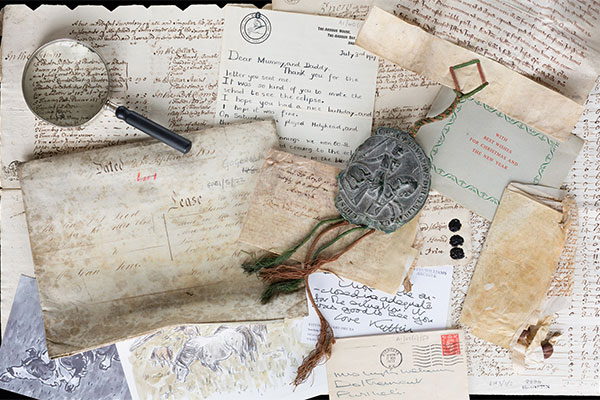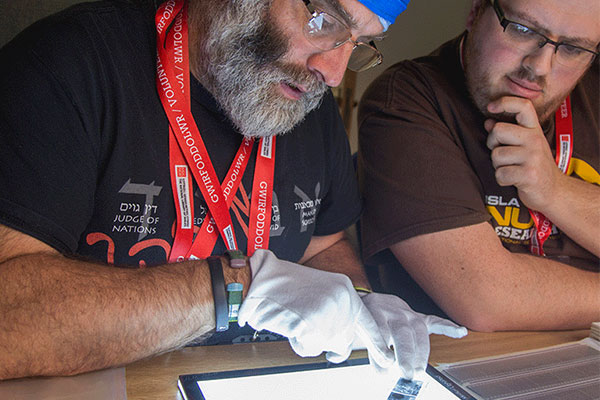Now showing in the National Library of Wales Peniarth Room is Call Us By Name, produced by the Royal National Institute for the Blind to commemorate its centenary in 1968.
The 26-minute film shows blind and partially-sighted people of all ages, either at home, at various training centres run by the RNIB, or at specialist schools. At these schools, children are seen cooking and learning how to deal with their environment through play, and girls at the Chorleywood College National Grammar School for Girls are seen being taught French and music using Braille. Adults at a training centre in Torquay learn Braille and socialise.
Stories and comments from these individuals, reflecting their different approaches and reactions to their situations - comprise the film’s narration, and the film’s title is taken from the words of one of these contributors:
“Even if you shut your eyes for a while you couldn’t feel the loss of your sight. You’d have to shut them for ever to know the isolation and terror of blindness. But you learn to live with it. At times it can even be exciting when you learn to master new techniques. But don’t pity us, don’t tyrannise us with your sympathy. Talk to us directly, touch us or call us by our name.”
Call Us By Name was written and directed by Cardiff teacher Bernice Rubens. Rubens is perhaps best-known as the first woman to win the Booker-prize (for The Elected Member, 1970), but was also an accomplished documentarian, primarily centred on social subjects.
The film’s music comes from Joseph Horovitz, who was approached to provide short sections of music for the film by Bernice Rubens, who he knew well. He based the sections on Luther’s hymn ‘A stronghold sure is our God’, retaining the main outline but adding a jazz-influenced rhythmic flavour as an accompaniment, to reflect the optimistic purpose of the film.
The National Library of Wales Screen and Sound Archive digitised Call Us By Name for the Unlocking Film Heritage project, and it can also be seen in full on the BFI Player. The film features quite a distinctive look due to dye-fade, a process which occurs over time where the different colour dyes, cyan, yellow and magenta, fade, often at different rates, disrupting the colour balance.
As part of the Archive’s ‘Cymru Anabl’ project, which was supported by the BFI National Lottery Screen Heritage Fund, descriptive subtitles and audio description tracks were commissioned for around a dozen films from the archive, including Call Us By Name. This means that anyone wishing to access or screen these films in future can do so with a greater degree of accessibility than ever before. In the Peniarth Room, the film is screening with Welsh-language descriptive subtitles and is accompanied by an English-language transcript. We’re looking into ways to support audio description in the Peniarth Room in future.
Though Call Us By Name is almost 60 years old, some of the messages shared by the people in it are as relevant and important to remember as they ever were. Most of all, it demonstrates the importance of representing lived experience. As one contributor notes:
“The public are always kind, and they always mean well. But unfortunately, they still use so many visual methods of communication - a wave, a gesture, a smile. It means a lot to them, but to us it means nothing.”
Simply expressed, this is a reminder that inclusion is paramount to ensuring equity for all.
Category: Article





